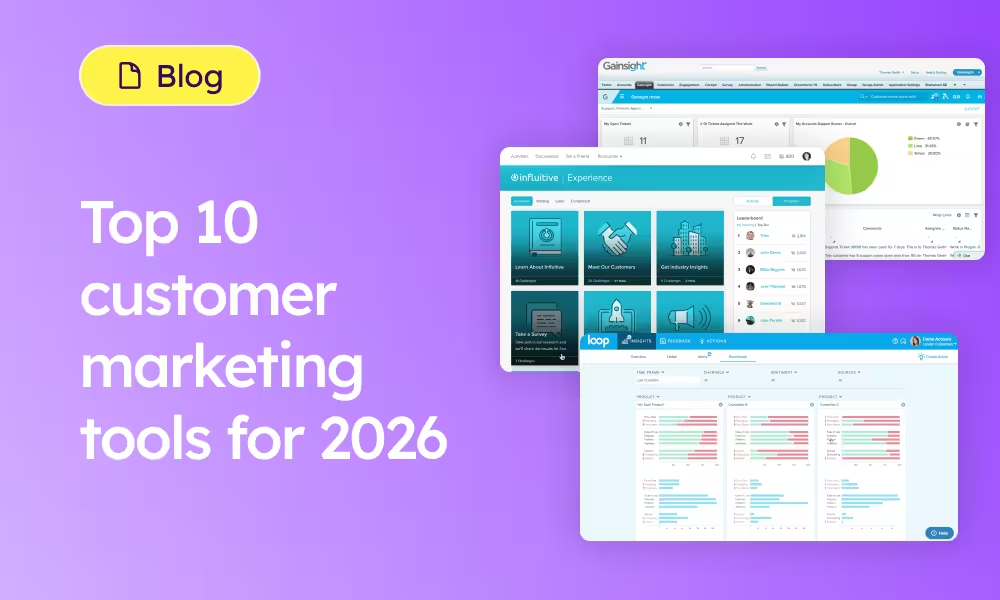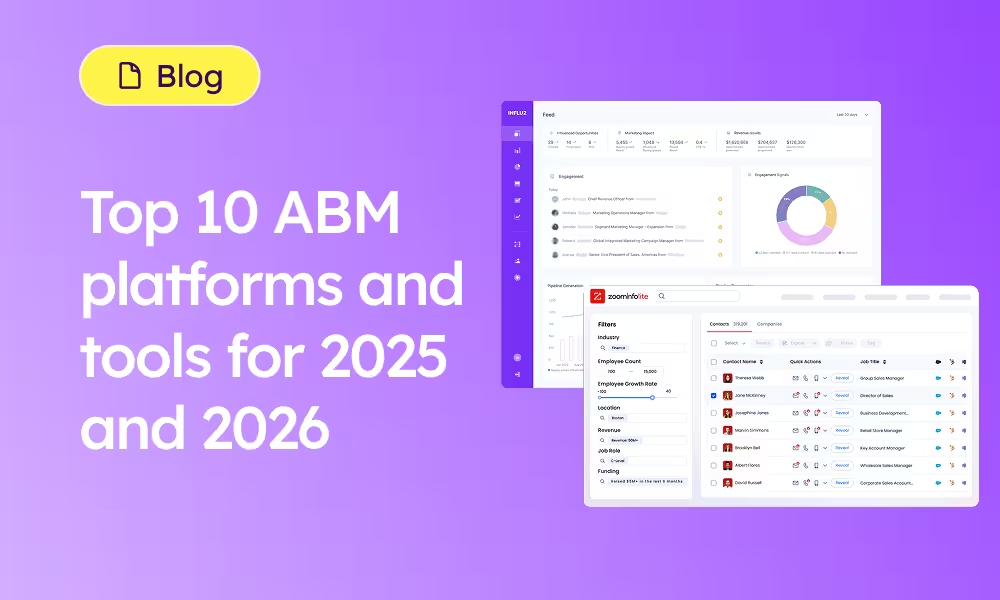One powerful platform for ROI-driven corporate gifting, swag, and engagement at scale.
When it comes to gifting and direct mail, measuring the success of your marketing and outbound efforts can feel overwhelming. You might wonder, can you really quantify the value of a simple gesture of goodwill? The answer is a resounding yes!
With a clear, measurable corporate gifting strategy in place, you can uncover how thoughtful gifts impact your business goals. When executed effectively, gifting and direct mail campaigns can be powerful tools to improve B2B relationships, boost customer loyalty, and accelerate pipeline growth.
To make the most of your gifting efforts, it’s crucial to set solid goals. Some common objectives that gifting can help you achieve include:
- Raising brand awareness
- Increasing pipeline
- Enhancing close rates
- Boosting deal velocity
- Driving customer renewals and referrals
Regardless of your specific goals, tracking the right gifting strategy metrics will provide meaningful insights, ensuring you stay on the right track and clearly demonstrate your campaign's success.
Expanding your corporate gifting strategy to maximize ROI
Before we dive into specific metrics, remember that the ultimate goal of any gifting strategy is to maximize the return on investment (ROI). The goal is not just to hand out gifts haphazardly but to build a scalable, repeatable, and data-driven gifting strategy that genuinely impacts your bottom line.
In fact, our research shows that gifting can yield significant returns:
- 447% increase in opportunities can be generated by marketing and sales campaigns that incorporate gifting.
- 163% boost in won business occurs when gifting is integrated into your campaigns.
- 212% increase in response rates from previously ghosted prospects can be achieved when gifting is utilized in sales outreach.
So, how do we create a gifting strategy that truly resonates? Let’s break it down:
1. Align gifting with business objectives
Think of your gifting campaigns as an extension of your broader business strategy. Whether your focus is on lead generation, customer retention, or upselling existing clients, gifting should seamlessly fit into your marketing and sales efforts. Define clear gifting campaign Key Performance Indicators (KPIs) early on, ensuring they follow the SMART criteria—Specific, Measurable, Achievable, Relevant, and Time-bound.
For instance, you might set a goal like: “Increase customer retention by 15% over the next six months by sending personalized gifts to high-value clients after their first purchase, with a follow-up campaign to measure satisfaction and loyalty.” Goals like this keep your gifting strategy sharp and results-driven from day one.
2. Personalization and call to actions (CTAs) matter
Nothing says “I care” quite like a personalized gift. Tailoring your gifts based on the recipient’s preferences, role, or industry makes them far more impactful. Whether you’re sending high-quality executive gifts to a CEO or smaller tokens of appreciation to frontline employees, personalization and clear CTAs can supercharge engagement rates in your B2B gifting strategy.
Imagine sending a coffee set to secure those all-important post-meeting follow-ups after a virtual conference. You might include a message with a compelling CTA like: “Hi [Name], I hope you’ve brewed up some exciting ideas during the event! I’d love to espresso our appreciation by reconnecting for your feedback—how about a virtual coffee? Hope this bundle perks up your day!” A thoughtful message like this not only adds a personal touch but also deepens your relationship with the recipient and persuades them to take an action.
💡 Pro Tip: Use Reachdesk AI to create personalized messages tailored to your gift, campaign goals, recipient details, and even their preferred language. This ensures your message hits home every time!

3. Timing is everything
The right timing can make all the difference in your gifting strategy. Sending gifts at the right moment in your sales funnel or customer lifecycle can be the nudge needed to close a deal or keep a customer happily renewing their contract. Tools like 6sense, ZoomInfo, or Champify can help you track when prospects are showing buying intent or engaging with your brand, allowing you to strategically time your gifting efforts.
4. Automate and scale your gifting campaigns
Managing gifting campaigns doesn’t have to be a juggling act. Automation tools can streamline your process, ensuring gifts are sent efficiently, at just the right moment, and to the right recipients. These tools also let you track key metrics, enabling real-time adjustments to improve your campaign performance.
💡 Pro Tip: Platforms like Reachdesk not only offer automation capabilities but also integrate effortlessly with your existing tech stack. This means you can optimize your gifting strategy without adding any unnecessary complexity.

5. Make data-driven decisions
Harness the power of data to elevate your corporate gifting strategy. By tapping into your CRM, you can uncover valuable insights about your key customers and prospects. Understanding their preferences, past interactions, and purchase behaviors allows you to tailor your gift selections and timing to fit their unique needs, ultimately measuring gifting ROI more effectively.
For instance, if you notice a prospect frequently engaging with your content around product launches, sending them a personalized gift during that period can significantly boost engagement and receptiveness.
💡 Pro Tip: Looking for a Gifting Partner that integrates with your tech stack? Reachdesk connects effortlessly with leading marketing, sales, and HRIS tools to elevate the success of your gifting campaigns.
6. A/B test
Just like any other marketing initiative, optimizing your gifting campaigns requires a touch of experimentation. A/B testing different elements—such as gift types, messaging, and timing—enables you to discover what resonates most with your audience. Perhaps a handwritten note paired with a gift yields better responses than a generic email. By continuously refining your approach based on test results, you can fine-tune your campaigns for maximum impact and ROI.
7. Take advantage of seasonal campaigns
Timing is everything in corporate gifting! Align your gifting efforts with key events, holidays, or special occasions to enhance their impact. By strategically planning your campaigns around high-engagement periods—like the holiday season, client anniversaries, or the fiscal year-end—you can tap into the festive spirit or urgent needs, making your gifts more memorable. For instance, a well-timed appreciation gift during the holiday rush can leave a lasting impression and foster goodwill, making clients feel valued. Check out our holiday gifting guide for inspiration!
Metrics to measure the success of your corporate gifting strategy
Now that you have a solid corporate gifting framework, let’s dive into the 7 critical metrics to measure the performance and ROI of gifting campaigns.
1. Response rate
What is response rate in corporate gifting?
Response rate in corporate gifting is the percentage of recipients who took the time to respond after receiving a gift. It's a key indicator of whether your corporate gifting campaign is sparking engagement with prospects, customers, or employees.
For example, if a Business Development Representative (BDR) sends a thoughtful gift along with a follow-up email, the response rate reveals how many prospects replied with requests for more info. A higher response rate signals stronger interest and engagement!
Keep in mind, though, that response rates can be influenced by various factors, including:
- Industry type
- Seniority level of your target audience (especially in B2B)
- Your gifting budget
- The gift’s personalization
- Quality of your initial message
- Type of gift sent
How to calculate:
To calculate response rate, simply divide the number of responses by the number of gifts sent. For instance, if you sent out 1,000 boxes of cupcakes and received 150 responses, your response rate is a solid 15%.
💡 Pro Tip: Tools like Reachdesk can boost your response rates by as much as 212% with integrated tracking and personalization features!
2. Redemption rate
What is redemption rate in corporate gifting?
Redemption rate in corporate gifting shows how many recipients actually claimed the gift or offer from your strategy. It’s a fantastic way to gauge how appealing your gift is to your target audience.
If your redemption rates are lower than expected, it might be time to shake things up! Consider swapping out eGifts for tangible items that could better capture interest. On the flip side, if your redemption rates are through the roof, congratulations! That’s a sign your audience is genuinely engaging with your campaign.
But remember, no matter what your redemption rates look like, the key is always in the messaging. Keep it relevant, timely, and personalized to spark those meaningful conversations that lead to lasting relationships. After all, the real goal of gifting is to create connections, not just close deals!
How to calculate:
To calculate redemption rate, divide the number of redeemed gifts by the number of gifts offered, then multiply by 100 for the percentage. A higher redemption rate means your campaign is hitting the mark! Alternatively, you can head to the Insights tab within the Reachdesk Insights dashboard and it’ll already be displayed for you:

3. Cost per conversion
What is cost per conversion in corporate gifting?
Cost per conversion is a crucial metric in your gifting strategy, it measures how much it costs to turn a prospect into a customer. This figure reflects your campaign’s efficiency and ties your efforts directly to ROI.
If you find your cost per conversion is higher than you’d like, it might be time to fine-tune your approach. Perhaps your BDRs need to better target prospects or your B2B sales sequence could use a refresh. Conversely, a low cost per conversion suggests your gifting strategy is working wonders!
How to calculate:
To calculate it, divide the total campaign cost by the number of customers acquired. For instance, if you spent $10,000 on a campaign and gained 50 customers, your cost per conversion would be $200.
4. ROI
What is ROI in corporate gifting?
As mentioned above, calculating gifting ROI is probably the most important metric when understanding the impact of your corporate gifting strategy. ROI measures the revenue earned from your gifting campaign compared to its cost.
How to calculate:
To calculate ROI for your campaigns, subtract the campaign cost from the revenue generated, then divide that number by the total cost. Multiply by 100 for the percentage.
For example, if your campaign brought in $40,000 in revenue and cost $20,000 to run, you’d subtract $20,000 from $40,000 to get $20,000. Dividing by the campaign cost of $20,000 gives you an ROI of 100%. Nice work!
At Reachdesk, we know the incredible power of gifting and direct mail! Studies show direct mail delivers an average ROI of 112%—the highest of any marketing channel! Some of our customers have even hit a staggering 384% ROI!
💡 Pro Tip: If you’re using Salesforce, the Influence tab in Reachdesk Insights can help you track how gifting boosts your bottom line!
5. Cost per send
What is cost per send in corporate gifting?
Cost per send refers to the total cost associated with sending a gift, including the price of the gift itself, packaging, shipping, and any additional fees. This metric is crucial for determining the overall efficiency and ROI of your gifting campaigns. By tracking the cost per send, you can ensure your budget remains manageable while still delivering impactful and personalized gifts that resonate with recipients.
How to calculate:
To calculate, divide the total cost of your campaign by the number of gifts sent. If you spent $6,000 on 1,000 gifts, your cost per send would be $6. On average, Reachdesk users see a cost per send of $27.90.
Wondering what gifts to send for the most impact?
Check out our Corporate Gift Ideas for Q4 here
6. Close rate
What is close rate in corporate gifting?
A close rate measures how many prospects from your gifting campaigns convert into customers. This metric gives insight into how effective gifting is in moving prospects through the sales funnel.
How to calculate:
To calculate close rate, divide the number of customers acquired by the number of prospects in the pipeline, then multiply by 100. For example, if you have 500 prospects in the pipeline and 100 become customers, your close rate is 20%.
7. Cost per acquisition (CPA)
What is cost per acquisition in corporate gifting?
Cost per acquisition (CPA) tells you how much it costs to acquire each new customer through your gifting strategy. This metric is vital for understanding the efficiency of your marketing efforts.
How to calculate:
To calculate CPA, divide the total cost of your gifting strategy by the number of new customers acquired. If you spent $10,000 on your campaigns and acquired 50 new customers, your CPA would be $200.
Additional metrics to consider for your corporate gifting campaign
While the above metrics are foundational, expanding your KPI tracking can give you a deeper understanding of your gifting strategy’s success.
8. Gift engagement
What is gift engagement in corporate gifting?
Gift engagement goes beyond corporate gifting redemption rates. It measures how recipients interact with the gift over time, such as how often a branded item is used or how it contributes to building a lasting impression. Tracking gift engagement provides valuable insights into the long-term impact and effectiveness of your gifting strategy, helping you refine future campaigns for better results.
How to track:
- Customer feedback: Encourage recipients to share their thoughts through surveys or feedback forms. Ask specific questions about how they’re using the gift and how it has impacted their experience.
- Social media listening: Monitor social channels for mentions of your gifts. Track hashtags or keywords related to your brand to see how recipients are showcasing them online.
- Product reviews: If gifts include physical products, keep an eye on customer reviews. Positive feedback indicates high engagement, while constructive criticism can provide valuable insights.
- Usage tracking: For branded items, look for ways to track usage indirectly by analyzing metrics related to customer interactions post-gift.
9. Pipeline acceleration
What is pipeline acceleration in corporate gifting?
Pipeline acceleration measures how corporate gifts impact the speed at which deals progress through your sales pipeline. Are recipients of gifts moving through stages faster than others? Tracking this metric can provide valuable insights into how gifts influence decision-making and drive quicker conversions, helping to prove the effectiveness of your gifting strategy.
How to calculate:
- Identify gift recipients: Keep track of which prospects received gifts during the sales cycle. Reachdesk’s integration with Gong and 6sense will help you here!
- Measure the time frame: Note the average time it takes for deals to progress through each stage of your pipeline for both recipients and non-recipients.
- Compare the results: Subtract the average time for gift recipients from the average time for non-recipients to see if gifts have led to faster deal closures.
10. Customer retention rate
What is customer retention rate in corporate gifting?
Customer retention rate measures how effectively corporate gifting helps keep your existing clients. Tracking this metric reveals whether well-timed, thoughtful gifts contribute to building loyalty and increasing the likelihood of renewals. A successful gifting strategy can strengthen relationships and boost long-term retention.
How to calculate:
- Identify your customers: Determine the group of customers you want to analyze. Focus on those who received gifts within a specific timeframe.
- Gather data:
- Count the total number of customers at the beginning of the period you’re analyzing (for example, a month, quarter, or year).
- Count how many of those customers are still active or have renewed their contracts by the end of that same period.
- Calculate the rate: To find the retention rate, divide the number of customers who are still active at the end of the period by the number of customers you had at the beginning. This result will give you a proportion, which you can multiply by 100 to express it as a percentage.
- Analyze the impact: Compare the retention rates of customers who received gifts versus those who didn’t to assess the influence of gifting on loyalty.
Now that you understand how to track the success of your campaigns, let’s explore four essential tips to maximize the ROI of your gifting initiatives.
Wrapping Up: Why Gifting Metrics Matter
You already know that the magic of corporate gifting is undeniable—it's a game changer in building strong B2B relationships. But to truly harness that power, you need to measure your success through key metrics. Tracking elements like response rate, cost per conversion, close rate, and ROI isn’t just a numbers game; it’s the secret sauce to refining your strategy and maximizing your return on investment.
So, roll up your sleeves and dive into the data! Understanding which metrics matter will not only help you optimize your gifting campaigns but also ensure they lead to meaningful business outcomes. Remember, it’s the thoughtful, personalized gifts—combined with clear objectives and a solid measurement framework—that create lasting impressions and drive results.
And that's where Reachdesk comes in. As a data-driven gifting platform, Reachdesk empowers you to measure your gifting ROI, track redemption rates, and seamlessly integrate with your existing tools to monitor your campaign's success. Book your demo now.






.jpeg)



